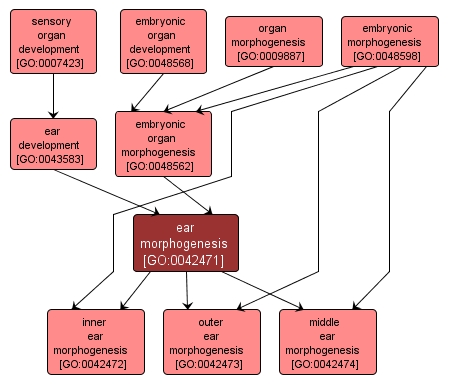| Desc: |
The process by which the anatomical structures of the ear are generated and organized. Morphogenesis pertains to the creation of form. The ear is the sense organ in vertebrates that is specialized for the detection of sound, and the maintenance of balance. Includes the outer ear and middle ear, which collect and transmit sound waves; and the inner ear, which contains the organs of balance and (except in fish) hearing. Also includes the pinna, the visible part of the outer ear, present in some mammals. |














